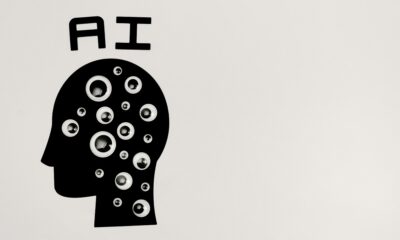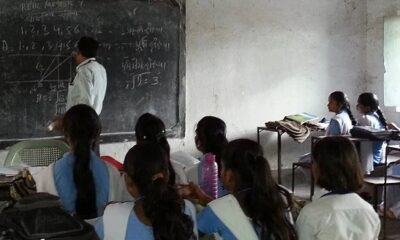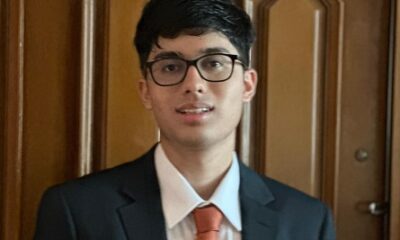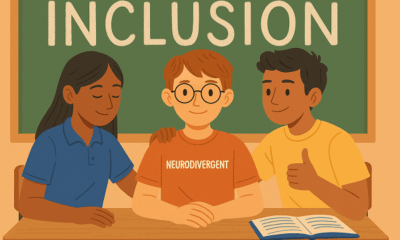Education
Classrooms: How should they change with the times?
PARVATHY JAYAKRISHNAN invited students to share how they envisioned their classroom and ideal teaching methods

Technology is everywhere. What it truly implies is that knowledge is there right at your fingertips. Paper maps have been replaced by Google maps, if you want grocery, you order online, to get the latest news, you subscribe to it on your smartphone. With digitisation replacing manual work in most areas of use, it is inevitable that the role of a teacher using traditional methods of teaching will soon become redundant. With most teachers themselves having learnt in the blackboard-bench set-up, it is a change that they have to adapt to and embrace to make classroom learning more effective.
With ‘flipped classrooms’ taking over traditional ones, teachers are slowly making progress in modifying their teaching methods.
A flipped classroom is an instructional strategy and a type of blended learning that reverses the traditional learning environment by delivering instructional content, often online, outside of the classroom. It moves activities, including those that may have traditionally been considered homework, into the classroom. In a flipped classroom, students watch online lectures, collaborate in online discussions, or carry out research at home while engaging in concepts in the classroom with the guidance of a mentor.
Excited about sharing their views, students from schools across India spoke up about how they want their classrooms to be and what are the changes in the method of teaching that can be adopted to include technology…
Interactive discussions, fewer tests
“No longer are classrooms restricted to teachers and books, as technology has changed the face of classrooms. With everything in the syllabus easily available online, students no longer need to carry books, thus reducing their load to school. Instead, they can just carry a laptop or a tab. Teachers can use projectors to highlight contents and use television to show informative documentaries. They can also use computers to prepare charts and graphs to disseminate information in a nutshell. Visual information in the form of charts and videos help students to understand concepts better. Smart boards are also widely used in schools nowadays, which reduce time wasted in teachers writing information on the board. The use of technology makes the classroom more interactive and colourful, thus making it easy to learn and more interesting to the students. And since this generation was brought up with technology all around them, using it in education will make them feel at ease. As the syllabus content is all online, students need not buy or print it again, as they can just see it on their tabs, or on the smart board.
Although, I wouldn’t be telling the truth if I said that the blackboard-benches format is not completely relevant today. I mean, it has been used for so many years, so many generations, and has helped students learn. But as the years go on by, everything is changing, and so should the method of teaching. So the switch-over to electronic media is the right thing to do. The blackboard-benches format gives a primitive feel to the class and the children feel lackluster. In this format, the teachers have to put extra energy and creativity to capture the interest of the pupil. It is also time consuming as the teacher has to spend time writing everything on the board. But one thing that this format does is the bonding between the teacher and the pupil. Technology cannot have such a great impact on a students’ life as a teacher does.
If classrooms are to be made interactive, students should be given activities related to the topic taught so that they understand the concept better. Emphasis should be laid more on teaching subjects and coordinating it with everyday activities, so the student can implement it on a daily basis or at least when required. Just learning theoretically is no longer relevant in today's world. Technology is fast changing, so quick thinking and implementing is essential to survive in this competitive world. Students should be encouraged to think differently and discuss their ideas with each other to lay the foundation for team work.
I’m glad that many teachers today encourage students to refer to and study content online. They too are updating their topics with recent developments in technology. Surely integrating these external learning systems with the school system will help students learn better. Just the idea of being tech-savvy makes the student thrilled. YouTube channels often offer unique and easy to understand techniques for students to apply in their exams. They provide an alternate way of teaching from the way it is usually taught in class, if students don’t exactly grasp the main concept. Online teaching usually explains concepts based on problems encountered in daily life, so the concept is better understood with its relevance.
In my dream class, there wouldn’t be any tests, or at least not as often. I would rather have interactive discussions with my co-students in which the entire class participates and everybody gets to air their opinion. Teachers should explain concepts with live demos or 3 dimensional models to have a better impact. Instead of writing, they should present the matter in powerpoint presentations thus reducing time delay. After explanation, they can show us some documentaries which will inform us how advanced the concept has grown today. I would also like spacious rooms with comfortable seating and colourful walls, with no restrictions on movements because if I am not comfortable, I wouldn’t be able to concentrate on the class.”
Adnan Ashriya
Class XI
Alpha Cambridge International School,Trichy
Making the classroom inclusive
“This is the 21st century and the nation is blooming with new technologies. Turn any side and you can find at least one thing which is automatic or it works on AI (Artificial Intelligence). While we have embraced it in multiple applications, why can’t we use it for our education? Education and Artificial Intelligence are two tracks which we can combine to make our learning better. Why should we carry heavy books and notes to school when we can have our content in our portable electronic gadgets at one swipe? Tests and homework can be done online and the students can have their own login ID and password to make it secure enough.
The classroom can be made inclusive by creating an academic support, a change in our curriculum, adjusting ranking calculations, creating a respectful school community and create a space for discussion.
In my dream classroom, blackboards would be replaced by smart TVs, our books and notes will be replaced by our own laptops, students will have their own pods and working spaces, they will have their own personal and customised lockers. They will have access to their phones only when allowed and they are free to access the range of e-books in the school’s website.”
Aparna
Class XI
Alpha Cambridge International School,Trichy
Tech should not replace teachers
“With the syllabus content easily available online, we can make the best use of improved technology in our classrooms. Technology should not replace teachers. Its main use is to enable students learn better and stimulate individual learning. This can be done by introducing tab-oriented learning in classrooms.
A classroom must have a black board in which concepts can be explained well to the students. In a classroom which is very advanced, blackboards can be replaced with smart boards in which teachers explain the concepts in the form of modules.
An inclusive classroom is a general education classroom where children with different abilities, capabilities and disabilities learn together. The class can be made by providing assistance to individual students. Another key aspect of an inclusive classroom is accessibility. Group learning can also be encouraged to make sure that every student of the class cooperates with one another.
Today, teachers are open to students learning from and discovering new YouTube tutorials or education apps. Integrating an external learning system provides better understanding of the concepts. But this alone is not going to help out, teachers have to take the children to the labs and show live experiments. But of course education apps provide students extra notes to learn and they are able to score good grades in examinations with the help of these apps and tutorials.
My dream classroom should be like heaven on earth which will contain a comfortable cushion chair with a table and every student needs to have a separate locker in which their things can be kept safe. The classroom should allow students to have their own laptops. The teacher should be so friendly with the students and they should give a few chances for them to make mistakes. There has to be a relaxation time of 10 minutes after every period. Books should not be carried; everything should be taught online and assignments also should be done online.”
Evangeline Esther J
Class IX
Alpha Cambridge International School,Trichy.
Switch to e-books
“Majority of Indian schools do not make use of all of the modern technology available via laptops and tablets. We carry cartloads of books and notebooks to and from school. If you lose a textbook or notebook, you may have a hard time learning in school and studying for exams. But, all of these textbooks are available online, so all you need is a tablet or a computer, and you can have access to those textbooks anywhere and at any time. You don’t have to worry about losing your textbooks. E-books are much cheaper too plus you are helping the environment by not using paper. So, from some of my personal experiences in the USA, I feel classrooms should provide students with tablets/laptops, and allow them to access textbooks using the device. Notebooks can also be replaced with tablets/laptops because there are free programs available like Google Docs (which I am using now), which allow you to type notes and access them from any device with the same Google Account and an internet connection, you can also save some documents to your computer in offline mode.
Blackboards and benches are not only boring but also unhelpful, they only allow you to write on them and they don’t allow for any interaction. Smart boards, on the other hand, are much more relevant today, a smart-board is basically a large TV, the size of a blackboard, which acts like a tablet, you can use it to play games, write things (using a program, smart-board markers and dusters), you can play videos on it, and write on the video/PPT, and do everything you could possibly do with a tablet, you just need a computer and cable. These smart-boards are very intuitive and attractive; they can keep students actively participating in the class and supplement learning. It may be a bit expensive but the advantages outweigh the cost. Benches should be replaced with individual tables and chairs arranged in groups for easier discussions.
The use of technology, in the right way, can even make the most boring lesson intuitive; there should be a balance between fun technology and learning. For example, if you are sitting in a biology class with a blackboard, you may be bored. But think about this, what if you had a tablet, which showed what the organ looked like and how it worked, while your teacher was showing a video on a smartboard, you and your friends were having an engaging discussion about this organ, and your tablet is taking notes based on what the teacher was saying based on speech recognition. That sounds much more fun and intuitive right? If every classroom was like this, everyone could do well in school, through a balance between fun and learning.
I feel, personally, that in my school, that teachers are not very open to students learning from YouTube videos on their own. The teachers do show us videos, but are not very encouraging towards us learning from YouTube videos that we choose. At my school, we do not use educational apps very much. But when I was in the USA, in my school, we were provided with MacBook Airs by the school, we did not have much-written homework at all! We were asked to watch YouTube videos and write about them, do lessons on apps like Khan Academy, and more than all of that, our teachers encouraged us a lot to go out and learn things ourselves on educational apps and share useful YouTube videos that we found with the whole class, this made learning much easier, more fun, and much more intuitive. I was able to learn things easily with the help of these apps, programs, and websites. By using computers more, I also learned how to type quickly and how to search the web effectively.
My dream classroom is not really a classroom; it is more of a system, which is followed by Middle Schools in some western countries. It is a system where the students go to different classrooms and attend class, they are provided with lockers to store their books and personal items. What I would like the individual classrooms to have is a SMART Board 7275 Pro, I would like for the students to be provided with Macs, the students should be seated in groups with individual desks and chairs, and the room should have some board games and cards if we finish early.”
Ishaan Masilamony
Class VII
Alpha Cambridge International School,Trichy
Reduction in technology
“We embrace the benefits of living in a high tech world—with high tech classrooms already, in my opinion. It’s high time we reduce the use of technology during sessions with teachers which includes a non-virtual conversation with a complete understanding of each other. I definitely prefer the ancient way of teaching that had more practicality and more physical manoeuvre than the use of smart Televisions and iPads. I feel that these gadgets are driving children to addiction and isolation, with most of them living in a hypothetical world.
Use of technology in education has come a long way since the earliest times of human civilization. While embarking on aids with advanced technology, we need to take full cognizance of the lessons from the past, striking a balance between embracing new methods of teaching and learning while holding on to the timeless principles of education.
Lessons can be enhanced with the right video. Something visual and entertaining that speaks to the subject the teachers teach breaks up the monotony of a lecture, brings some fun into the lesson, and keeps us more engaged and interested in the subject.”
Jyotsna
Class IX
Alpha Cambridge International School,Trichy
Getting interactive with technology
“Teachers have to rethink their teaching methods, as this is a flipped classroom we are talking about. Students' expertise in online communication can play a major role here. Letting the students create, collaborate and get interactive with technology can make their learning a whole lot fun. Adding a few simulators in higher grades would be good too.
Living in the 21st century, blackboards aren't exactly the first thing that comes to everyone's minds when given a choice between black and white boards. When someone prefers an older technology to a newer one, there's usually both a utilitarian reason and an aesthetic or nostalgic reason. Blackboards are better tools than whiteboards especially at showing processes, as they force teachers to work more slowly and deliberately and think, whether they are going through a complicated problem, or just simply noting down thoughts and ideas.
Making classrooms inclusive can be a piece of cake if thought thoroughly, by taking each of the classroom activities in mind. Electronic books, speech software etc. can be brought in for "reading", whereas grammar or spelling checkers, word processors etc. can be a part of "writing". There can also be eye glasses and eye magnifiers for "vision" too.
Honestly, not all teachers encourage technology to interfere in education but there are an equal amount of teachers who do embolden smart learning which makes their lectures immensely exciting. Adding a few of these "high tech" procedures, will not only help other students in their learning, but also make schooling fascinating.
First thing, my dream classroom won't have any of the hard table and chairs we sit on, instead it would have plush and comfy chairs with every student having their own study space which they go to after every lesson for a 10 minute break to revise everything they learnt in the past hour. My classroom will be 10 times the size of a normal classroom inclusive of a small "your zone" where a person can go relax and come back during intervals. Smart tables in the main space for learning and will be placed where interaction between the students and teachers can be facilitated, not forgetting the podium upfront for class seminars and activities.”
Shridhi Singhvi
Class IX
Alpha Cambridge International School,Trichy
Real-world problems in the classroom
“An important use of technology is its capacity to create new opportunities for curriculum and instruction by bringing real-world problems into the classroom for students to explore and solve. Technology can help to create an active environment in which students not only solve problems, but also find their own problems. This approach to learning is very different from the typical school classrooms, in which students spend most of their time learning facts from a lecture or text and doing the problems at the end of the chapter. Learning through real-world contexts is not a new idea. For a long time, schools have made sporadic efforts to give students concrete experiences through field trips, laboratories, and work-study programmes. But these activities have seldom been at the heart of academic instruction, and they have not been easily incorporated into schools because of logistical constraints and the amount of subject material to be covered.
Traditional blackboards can be used for geometry, botany subjects where the lecturer has to explain with a drawing. But I feel newer methods of teaching are good for the students to understand subjects better.
In my dream classroom, I will ensure that work flows throughout the classroom. I will create a place where students can meet and feel secure – students learn from each other, they need a consistent environment where they can have face-to-face interactions. I would place the teacher's desk at the back of the room rather than the front- this lends the classroom to maximizing student learning through communication, reflection and reinforcement rather than the traditional "chalk and talk" setup
Of course yes, I would surely exclude the system of memorizing and vomiting and I would completely encourage the use of technology as much as possible, not only for easy access but also for interaction between students.”
V Deepika
Class IX
Alpha Cambridge International School, Trichy
Knowledge over marks
“Our classrooms can be made progressive by integrating technology into our teaching in order to make it as easy as possible for the children to learn and in order to
give the students another perspective of a topic being taught. We can also use web services such as Google Classroom and Microsoft Teams to remind students of
homeworks and assignments by posting them online, rather than the old school diaries.
The blackboard-benches format is irrelevant in today’s culture and in fact, the old school system hinders students from learning the subject matter in an effective way. Using blackboards for subjects such as Physics, Geography, Chemistry, and many more does not paint a wholesome picture and sometimes even leaves the students confused since they can not completely understand the concept. By saying so, I’m not stating that black boards should be completely eradicated, instead, blackboards should be used as a supplement to a more digital classroom.
The best way to make the classrooms more inclusive is to govern the school pupil using love and friendliness instead of instilling fear. By this I mean that, the students should have the freedom to do what they want in order to gain the needed experience from school life, rather than just adhere to preset guidelines in order to pass a set of papers. The school staff should only be there to guide students in the right direction when they veer off, rather than define a strict path for them, which they have to navigate as per the wishes of the staff. The classrooms can also be made more friendly by decorating the walls with posters, letting students wear appropriate yet colorful dresses of their choice once or twice a week, and letting them choose what they want to learn from an earlier stage of their educational careers. I think the teachers nowadays are very open to outside help from multimedia sources, however, there are some teachers (very few) who are against this, and even demand their students to learn traditionally. I think that integrating multimedia sources into our schools is a progressive and crucial move that schools all over the world need to make. There are apps now such as Byju’s learning app, which supplement the students’ understanding of concepts, and in many cases even aid the students in clearing any confusions that may have risen by the old school, traditional style of teaching. Although schools should use educational apps to supplement their teaching, they should be careful not to use applications which are only focused on making a profit, rather than help the students. Schools should consider using a source that is free for all and which is non profit such as Khan Academy in order to guarantee that their students can get the best that is available as of right now. Lastly, the schools should also be careful only to use the multimedia sources as a “supplement” to the education given in school, rather than using it as the primary source of education for the students. My dream classroom is one where, I can learn whatever I want in a way that is tailored for me, rather than me having to adapt to the system. My dream classroom is one where, I can have a teacher like Aamir Khan from “Taare Zameen Par”, rather than have a teacher like the principal from “3 Idiots”. Finally, my dream classroom is one where, I can go in order to learn and increase my knowledge, rather than go to a classroom to score good marks in the exams and to study in a good college.”
Sricharan Sridhar
Class IX
Alpha Cambridge International School,Trichy
Need to adapt practical learning
“Everybody wants to learn technology, for no doubt technology is mastering this modern world. So why not utilise it effectively? Rather than writing by hand, typing on MSWord allows students to cut and paste, save their work and use spell checkers and thesauruses. First of all, students need edu-pads at schools which should replace notebooks and pens. Surveys show that most children show reduced interest in studies because they are forced to write. Typing and surfing might lighten their workload.
‘Games’ linked with academics are very essential because it is said that playing games activates brain dopamine and improves memory.
‘No Stress Learner’ enables us to be updated even when we are on leave. Lectures by teachers are recorded and played later, so that we never miss a point due to illness or any other reasons. Technology might be helpful but has demerits too- high cost, availability, distraction etc. If these factors are checked, then technology becomes a great boon for future learning.
Exams should be excluded from schools because the main aim of exam is assessment. Students should be allowed to frame their own queries and doubts and indulge in self-assessment. Students should not be forced to learn a subject which they are not interested in. Rather they should be encouraged to acquire intense knowledge in the subject of their choice. Entrance exams should be practical. Medical and Engineering professions are not jobs of theory but of practice. Finally, schools should adapt practical learning. So, my dream classroom should be able to satisfy these expectations.”
Swarupaa Sree S
Class XII
Alpha Wisdom Vidyashram
Quest for application-oriented learning
“In the olden days, the classroom atmosphere was built around the ‘chalk and talk’ method but this rigid practice has been altered dramatically in the recent years. This factory model of learning has now changed and thus the 21st century requires a learning system which indulges in the use of technology. Students should be familiarized with tools like, ‘Word Processing Tools’, ‘Presentation Software’, ‘Course Management Tools’, Lecture Capture Tools’ etc. to enhance their learning. They must be given free access to educational apps available online to boost their learning. Opportunity must be created for students to participate in online seminars, discussions and conferences. Virtual field trips to various places could give students detailed idea of what is taught in the lessons because visuals speak louder than words. Anytime and anywhere learning is possible with purposeful technology.
The blackboard-benches format, although traditional, is still relevant and has ease of presentation. Calculations, diagrams, sketches, maps can be presented effectively on blackboards. Every tutor may not be familiar with new technology but the traditional method is handy to all. Moreover, this method is inexpensive therefore is accessible to schools of any category and any category of students. The blackboard-benches classroom develops interaction between teacher and students and among students.
In ancient times, the ‘Gurukulam system’ enhanced knowledge and honed the skills of the students. But today unfortunately, education comprises syllabus completion, projects, assessments, homeworks, exams etc. within the four walls. A classroom must adapt practical and application-oriented learning. For example, learning related to agriculture, working of drones, rockets etc. should be practical than theoretical. My dream classroom should have access to facilities such as ‘Cloud Technology’ and ‘3D Printer’ to meet the needs of new generation learners. Using holograms in classroom teaching may seem practically difficult but introducing the same in small scale will help to teach the children how it works. Principles followed by the Japanese educational system are wonderful. Our educational system too should prepare the students for their career from childhood rather than just producing the graduates. Students must be taught values and how to respect nature and fellow humans rather than preparing them for exams. Classroom should not only have books and blackboard but also have amenities to learn traditional arts. Digital development in classroom alone will not help the learning to be effective. So, my dream classroom must be an inclusive classroom with all possible features to supply to the needs to satisfy my quest for learning.”
Oviya. S
Class XI
Alpha Wisdom Vidyashram
No more four-walled classrooms
“The syllabus content from online education is extremely useful and it is an easy learning equipment for students in the present generation. Our classrooms will also adapt to this kind of learning by setting up Smart Boards. Teaching on blackboards helped us when we were in smaller classes. In higher classes, it is easier to use the Smart Board System with whiteboard which will attract the students’ mind to capture the syllabus content easily.
Today, we are happy that a number of teachers have started posting content on their YouTube channels for their students to benefit from. Some students may have doubts about a topic taught and may feel shy to express it in class. Now, they can easily find answers to these question by referring to external learning systems.
Our dream classroom should be a “pathway for making students future nation builders”. Great philosophers like Albert Einstein, Isaac Newton and Mahatma Gandhi learnt about life from their exposure to the society and not by learning in classrooms. We believe that it is time to end the concept of a four-walled classroom.”
Afzar A (Class XI) and Sharlene A (Class XII)
Alpha Plus Matriculation Higher Secondary School, Trichy
Free area minus distractions
“Rethinking to the 19th century (inverting the traditional ways) would be a good choice when comparing the way of studies. Making the students feel relaxed can reduce the stress of everybody. A whole core of new subjects ought to be included due to tomorrow’s way of work. Books can be optional because everyone might not be comfortable with online syllabus. Doing projects practically from online tutorials is a good idea too. Beautiful places that can make the student feel good to be at school with art, plants, music (when needed), comfortable seating with fast internet access would be all that is needed. The ideal classroom would be like a free area with no distractions and teachers cannot be excluded because no kid is perfect, so an experienced guide is needed.”
Mir Zahid Ahmed
Class IX
Alpha Cambridge International School,Trichy
Education
AI to Become a Core Subject from Class 3: India’s Big Leap Toward a Future-Ready Generation
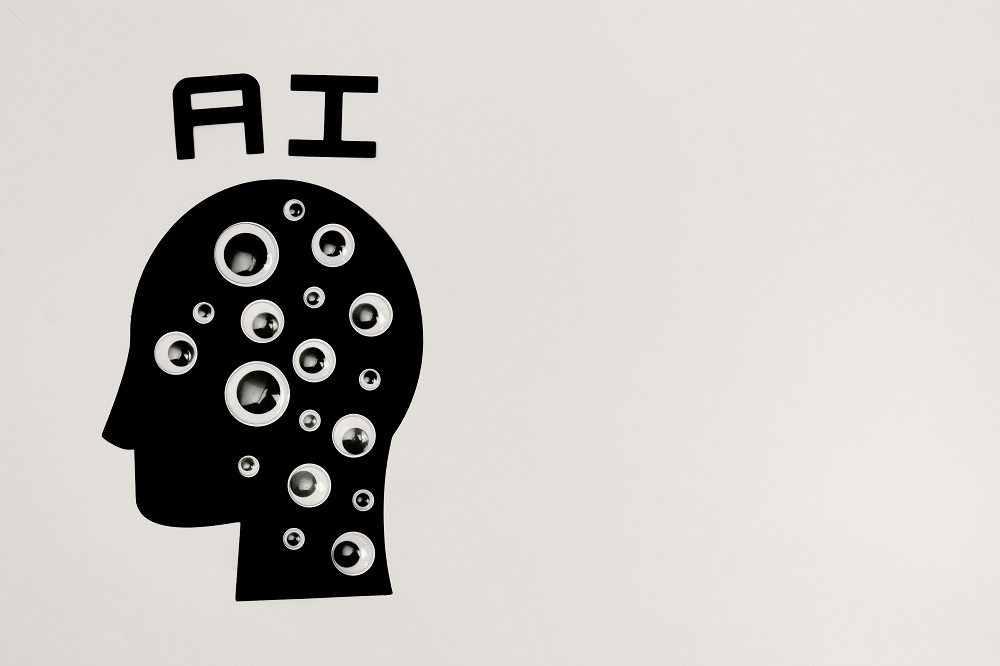
In a landmark move to make India’s school system future-ready, the Department of School Education & Literacy (DoSE&L), Ministry of Education, has announced that Artificial Intelligence (AI) and Computational Thinking (CT) will be introduced as part of the school curriculum from Class 3 onwards, beginning in the academic year 2026–27.
The initiative marks a major step in preparing students for an AI-driven world, ensuring early exposure to technological literacy, ethics, and problem-solving. The curriculum, currently being developed through a consultative process with CBSE, NCERT, KVS, NVS, and States/UTs, will fall under the National Curriculum Framework for School Education (NCF-SE) 2023, in alignment with the National Education Policy (NEP) 2020.
A stakeholder consultation held on 29th October 2025 brought together education leaders, including Prof. Karthik Raman from IIT Madras, who heads the CBSE expert committee responsible for shaping the AI & CT curriculum. The focus is on designing a meaningful, inclusive framework that integrates AI not as an advanced elective but as a foundational skill — comparable to literacy and numeracy in importance.
Shri Sanjay Kumar, Secretary, DoSE&L, emphasised that AI education should be viewed as a universal skill closely linked to real-world applications. “Every child’s distinct potential is our priority. Policymakers must define minimum thresholds and evolve them with changing needs,” he said. He also stressed on teacher training as the backbone of successful implementation, with modules under NISHTHA, and resource materials being prepared by NCERT and CBSE.
The Ministry plans to release AI handbooks and digital resources by December 2025, followed by a grade-specific rollout supported by video-based learning materials and structured training.
By embedding AI education from the foundational years, India aims to nurture a generation that understands, creates, and applies technology ethically — transforming the vision of AI for Public Good into everyday classroom reality.
Education
Dharav Utsav to Celebrate Rajasthan’s Cultural Heritage and Local Talent

Education
How to Build Better Parent-Teacher Communication

Good communication between parents and teachers plays an important role in a child’s learning and confidence. When both stay connected, it helps students feel encouraged and understood. Still, it’s not always easy to keep that connection strong. Busy schedules and small misunderstandings can make things tricky. The good news is that a few simple habits can make a real difference. Let’s examine what parent-teacher communication truly entails and how both parties can collaborate more effectively.
What is Teacher and Parent Communication?
Teacher and parent communication is all about staying connected and working together for a child’s growth. It’s not just a one-time meeting or message but a continuous, two-way exchange of updates, ideas, and feedback. When teachers and families stay in touch regularly, it creates a strong support system that helps students do better both in and outside the classroom.
In simple terms, teachers share what’s happening at school, like:
- Homework and assignments
- Grades and test results
- Class activities and behavior updates
- Social and emotional progress
- Strengths and areas where a student might need extra help
At the same time, parents share what’s happening at home, such as:
- How the child feels about schoolwork
- Any challenges or changes they’ve noticed
- Questions or suggestions about learning support
When both sides keep the communication open, it builds trust and teamwork. Teachers understand students better, and parents feel more involved in their child’s education.
Tips for Smooth Parent-Teacher Communication
Talking to parents doesn’t have to feel formal or uncomfortable. In fact, the better your connection with them, the smoother your teaching journey becomes. Whether you’re reaching out for the first time or trying to keep the conversation going, here are some real-world ways to build trust and keep communication easy, clear, and helpful.
1. Begin with a Friendly Introduction
Right at the beginning of the academic year, take a moment to introduce yourself to parents. You can send a friendly email, a printed note, or even a short video message. Let them know who you are, what you’re excited about, and how they can reach you. This early step breaks the ice and helps parents feel welcome and included in their child’s learning journey. When you set a positive tone early, it makes future communication easier and more comfortable for everyone.
2. Communicate Often, Not Just When There’s a Problem
Don’t let communication only happen during parent-teacher conferences or when something goes wrong. Send regular updates about what’s happening in class, upcoming events, or even small successes their child has had during the week. These don’t need to be long messages. A quick note about a student’s progress or behavior can make a parent’s day and help build trust over time. It also shows that you’re not just reaching out when there’s a problem.
3. Invite Their Voice, Too
Sometimes we forget that parents know their child better than anyone else. Ask questions. How does their child learn best at home? Are there any routines or challenges you should know about? And when they speak, listen fully. These conversations often reveal things that can shape how you teach and connect with the student.
4. Be Available and Approachable
Parents need to know that they can come to you when something is on their mind. That doesn’t mean being available 24/7, but it does mean creating space for honest conversations. You can let them know about your preferred times for calls or meetings, and also offer virtual options if in-person isn’t possible. Make sure the tone of your communication is always warm and non-judgmental so they feel safe speaking up.
5. Treat Parents as Team Members, Not Outsiders
Instead of just delivering information, try to involve parents as partners in their child’s learning. Share ideas for how they can help at home, ask for their observations, and thank them for their efforts. If there’s a behaviour issue or academic challenge, work with them on solutions instead of just reporting the problem. A strong home-school partnership creates a consistent support system for the student, both inside and outside the classroom.
6. Show Cultural Awareness and Respect
Families come from many different backgrounds, and their expectations may vary. Take the time to learn about their culture, language preferences, and family structure. Avoid making assumptions or using language that might feel exclusive. If needed, provide translations or simplify your communication to make sure everyone understands. This small effort shows parents that you value who they are and where they come from.
7. Share Progress in a Way That’s Clear and Supportive
Progress updates should be balanced. Yes, it’s important to point out what’s not working, but don’t forget to highlight what is. Give specific examples instead of vague praise or criticism. Say things like, “I’ve noticed Priya really lights up during science experiments,” or “Rohan is still working on staying focused during group tasks.” This kind of feedback feels personal and helps parents understand the full picture.
8. Choose the Right Tools for the Right Message
Too many apps or tools can overwhelm parents quickly. Choose one or two that you’ll stick to, whether it’s a school app, WhatsApp group, or weekly email. Use them for quick updates, reminders, or sharing student wins. Keep your tone casual but clear. Tech is helpful only when it makes life easier for both sides.
9. Respect Their Time and Yours
Teachers and parents are both juggling busy schedules. Respecting each other’s time helps keep communication productive and stress-free. If you’re scheduling meetings, offer time slots that work for working parents, too. Keep conversations focused so that meetings don’t run longer than necessary. Also, set clear boundaries about when you’re available.
When Is Parent-Teacher Communication Most Important?
Parent-teacher communication matters most right at the start of preschool. That first day of preschool is a big moment for every child and their family. When teachers and parents talk openly from day one, it helps everyone feel more comfortable and sets up a strong partnership for the rest of the year.
Why It Matters on Day One
- The first day of preschool often brings a mix of excitement and nervousness for both kids and parents. Honest communication helps everyone feel a little more comfortable.
- Open communication lets teachers learn about each child’s background, interests, and any worries or comforts. This way, teachers can give more personalized care and support from the beginning.
- Early conversations help build a sense of trust between home and school, making the classroom feel like a safe and welcoming place for the child.
- When teachers share classroom routines and expectations with parents on the first day, it helps families get ready and feel involved in their child’s new experience.
- These early talks also give teachers helpful details, like which languages are spoken at home, special family traditions, or any recent changes in the child’s life. This helps teachers communicate better and offer the right kind of support.
By making communication a priority from the very first day, both teachers and parents can work together to help each child settle in smoothly and feel confident as they start their schooling journey. Building strong parent-teacher teamwork not only supports a child’s emotional well-being but also lays the foundation for long-term academic success.
Closing Thoughts
We hope these tips help make your conversations with parents smoother and more meaningful. Building that connection takes time, but small efforts can lead to strong partnerships.
This article is authored by-
Chitra Khanna,
Content Strategist,
KLAY Preschools & Daycare
Education
Beyond the Syllabus: School Teachers’ Insights on Project-Based Learning
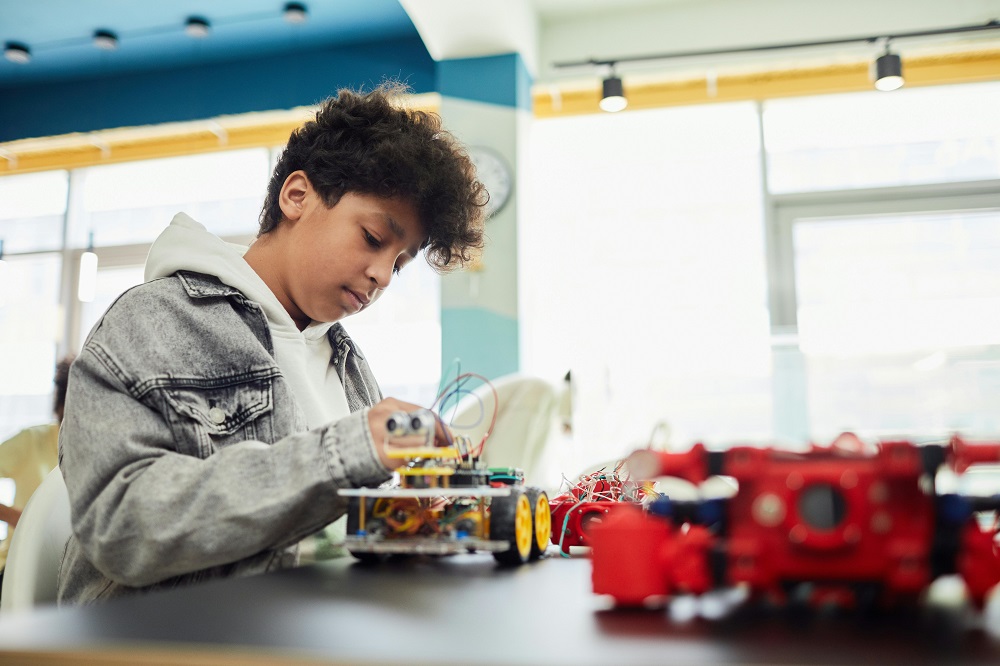
How classroom experiences are being reshaped through projects, inquiry, and authentic learning
As the classroom grows beyond the boundaries of textbooks and blackboards, so too does the role of the teacher, and the very meaning of learning. Project-Based Learning (PBL), once considered a niche innovation, is increasingly being embraced by educators across schools in India. But what happens when PBL moves from theory to practice?
To answer this, we turned to the people at the heart of the learning experience: teachers.
In conversations with educators from diverse school contexts, one theme was clear: PBL is not just a teaching strategy; it’s a transformation in how students learn, engage, and grow.
From Worksheets to Real-World Work: How PBL Differs from Traditional Homework
One of the clearest contrasts teachers observed was how PBL moves learning from repetition to relevance. Traditional homework often reinforces information through rote exercises. PBL, by contrast, asks students to apply their knowledge to solve problems, create products, or investigate issues that matter to them.
One teacher shared how using PBL to raise student awareness about water pollution was a hit in the class. Instead of just assigning problems, the students were made to create awareness posters, conduct surveys in their neighbourhood, and suggest solutions through group presentations. The teacher also noted how the students took the lead, and had an ownership over this project that they usually don’t showcase.
The shift from repetition to application fosters deeper engagement. Several teachers noted that students who previously struggled to stay motivated with homework showed renewed interest when asked to take on real-world challenges.
Changing Roles: Teachers as Facilitators, Not Just Instructors
Project-Based Learning also changes the role of the teacher, who went from being the sole source of knowledge to a guide who supports inquiry and exploration.
One common change teachers noticed was on how they had to let go of control in the classroom. Naturally, the students now had to work on projects on their own, and could only come to the teacher for guidance and help. The teachers noted that they helped their students ask the right questions, find credible sources, and evaluate their work, instead of completely placing the burden of learning on the teacher themselves.
This change isn’t always easy. It requires a shift in mindset and in many cases, rethinking how time is used in class. But most teachers agree: the shift is worth it. PBL has encouraged interdisciplinary approaches, made space for collaborative learning, and created more meaningful student-teacher interactions.
Unlocking Student Potential: What PBL Offers Beyond Academics
Academic performance remains important, but a lot of teachers repeatedly pointed out that PBL nurtures a broader set of skills, like critical thinking, collaboration, communication, and creativity. One teacher particularly noted on how their quietest students became ‘leaders’, and became outspoken when it came to presenting their ideas and projects. While not directly, PBL helped these students find their voices, and find confidence in their effort and abilities.
Students learn to manage time, negotiate roles, and solve problems, skills that aren’t always reflected in exam scores but are vital for life beyond school. For many teachers, the most rewarding aspect of PBL was watching students take initiative, work through failure, and reflect on their learning.
Widening the Circle: Strategies for Scaling PBL in More Classrooms
While the benefits are clear, teachers acknowledged that implementing PBL at a large scale comes with challenges, like limited time, rigid curriculum structures, and unfamiliarity among teachers.
They offered a few practical suggestions for schools and educators considering wider adoption:
- Start Small and Build Confidence: Starting with short projects aligned to the unit you are already teaching introduces PBL in an easy manner. This way, teachers do not have to worry about overhauling their curriculum, or for making huge changes to their current teaching methods.
- Encourage Collaboration Among Teachers: Joint planning across subjects makes projects richer and more integrated. This also promotes interdisciplinary skills among students, and allows them to craft solutions using different subjects and skillsets.
- Make Time for Reflection: Embedding opportunities for students to present, critique, and reflect helps solidify learning. By reflecting on their projects and mistakes, they can understand how they can improve their approach to PBL.
- Support Professional Development: Teachers emphasized the need for ongoing training, not just one-off workshops but long-term spaces for peer sharing and mentorship. This continuous development would cement and solidify the methods and outcomes that will maximise using PBL for student benefits
Looking Ahead: Redefining Success in Education
PBL challenges traditional ideas of what learning looks like. It pushes students to move beyond memorization, and it challenges teachers to rethink their methods. But more than anything, it opens up the classroom to ideas, to communities, and to possibilities. No longer are students just preparing for exams, but also for the complex world outside school.
As educators continue to navigate the changing landscape of education, the insights from teachers point us toward a hopeful future, where learning is meaningful, relevant, and rooted in real-world experience.
This article is authored by Mrs. Padmashini M Patro, Principal, Air Force School Bamrauli
Education
Over 1 Lakh Single-Teacher Schools Educate 33 Lakh Students Across India: MoE Data
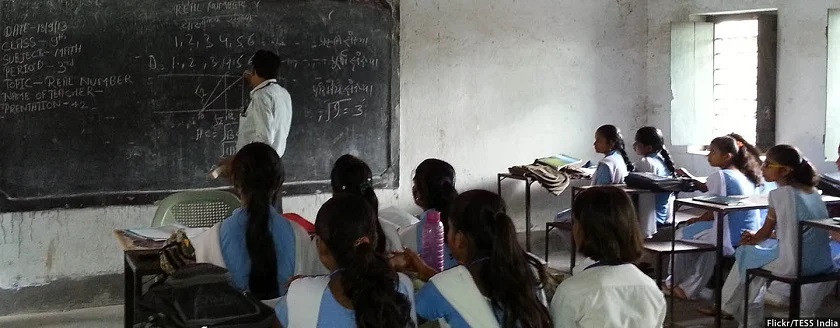
Education
Over 3 Lakh Schools Join Hands for India’s Largest-Ever Innovation Challenge: Viksit Bharat Buildathon 2025
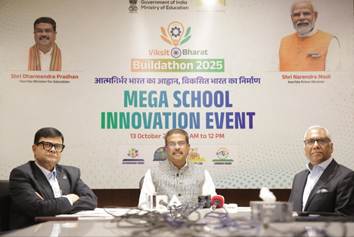
In a historic moment for Indian education, more than 3 lakh schools across the country came together to participate in the Viksit Bharat Buildathon (VBB) 2025, the largest live school innovation challenge ever organised in India. The nationwide event was inaugurated in New Delhi by Union Education Minister Dharmendra Pradhan, marking a significant milestone in the Government’s efforts to embed creativity, innovation, and problem-solving into the school ecosystem.
The Viksit Bharat Buildathon, organised by the Department of School Education & Literacy (DoSEL) in collaboration with Atal Innovation Mission (AIM), NITI Aayog, and AICTE, saw over one crore students from Classes 6 to 12 working simultaneously during a 120-minute live innovation session. Students teamed up in groups of three to five to design prototypes and propose solutions under four themes — Atmanirbhar Bharat, Swadeshi, Vocal for Local, and Samriddhi.
While inaugurating the event, Minister Pradhan interacted virtually with students of PM SHRI Government High School, Khorda, Odisha, and later visited Delhi Public School, Mathura Road, and Kendriya Vidyalaya No. 2, Delhi Cantt. Commending students for their creativity, he said, “The vision of Viksit Bharat will be realised through the innovative spirit of our young learners. These ideas will not only address domestic challenges but also create global models for change.”
The event drew widespread participation, with Uttar Pradesh leading the numbers (78,206 schools), followed by Maharashtra (41,198), Gujarat (20,017), and Madhya Pradesh (18,129). Other states like Tamil Nadu (16,370), Bihar (15,732), Odisha (12,344), and Haryana (11,567) also recorded impressive engagement, showing the growing momentum for grassroots innovation across regions. Even smaller territories like Ladakh (358), Puducherry (149), and Andaman & Nicobar Islands (171) participated actively, reflecting the nationwide reach of the initiative.
According to Sanjay Kumar, Secretary, DoSEL, this unprecedented participation signals a transformation in how Indian students approach learning. “This one-of-a-kind movement strengthens innovative thinking and enhances the problem-solving capabilities of students across India,” he said. Deepak Bagla, Mission Director of AIM, called the initiative a “mass movement connecting schools in remote villages with those in metropolitan cities through innovation.”
A New Chapter for Indian Education
The Viksit Bharat Buildathon signifies more than just a hackathon — it reflects a systemic shift in Indian education towards experiential and innovation-led learning. As schools across the country engage in design thinking, tinkering, and collaboration, students are being equipped not just with knowledge, but with the mindset and skills needed to build a self-reliant India.
By nurturing creativity from an early age and fostering partnerships between schools, government bodies, and industry, the Buildathon is shaping a generation ready to contribute to the vision of Viksit Bharat 2047 — a developed, empowered, and innovation-driven India.
Education
17-year-old Innovator Designs Learning Tools for the Visually Impaired
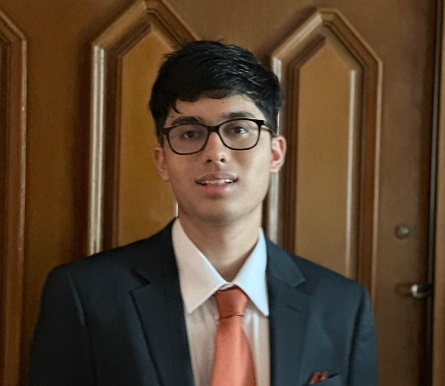
At just 17, Singapore-based student Ameya Meattle is proving that age is no barrier to impact. What began as a small idea to make education more accessible has evolved into a mission that is transforming how visually impaired learners experience learning and skill development.
Ameya founded Earth First at the age of 14 — a social enterprise that helps visually impaired individuals “earn and learn” by creating sustainable, eco-friendly products. Working with eight NGOs across India and Singapore, the initiative has trained more than 100 visually impaired students and launched over 23 sustainable product lines, from tote bags and jute placemats to macramé planters. Each design is adapted to provide hands-on learning opportunities and help trainees gain confidence in both craft and enterprise.
Beyond social entrepreneurship, Ameya has focused deeply on education and technology. He led a Python programming course for 50 visually impaired students, designing custom training modules that made coding accessible through screen readers and tactile tools. By introducing technology as a viable career pathway, Ameya hopes to help students move from manual tasks to high-skill, digital opportunities.
His work also extends into assistive technology research. Under the mentorship of Dr. Pawan Sinha at MIT, Ameya developed a VR-based diagnostic game to assess visual acuity in children — turning the process into an interactive experience rather than a clinical test. The tool is being piloted at MIT’s Sinha Lab and with Project Prakash in India, helping doctors evaluate and track visual development before and after eye surgeries.
In addition, during his internship at the Assistech Lab at IIT Delhi, Ameya worked on designing tactile STEM teaching aids, such as accessible periodic tables and coding tutorials for visually impaired learners. His goal, he says, is not just to innovate but to make scientific learning inclusive and joyful for all.
Ameya’s work highlights how education, empathy, and innovation can intersect to create a more equitable future — one where technology serves not just progress, but people.
Education
Empowering Young People to Champion Neuro-Inclusion
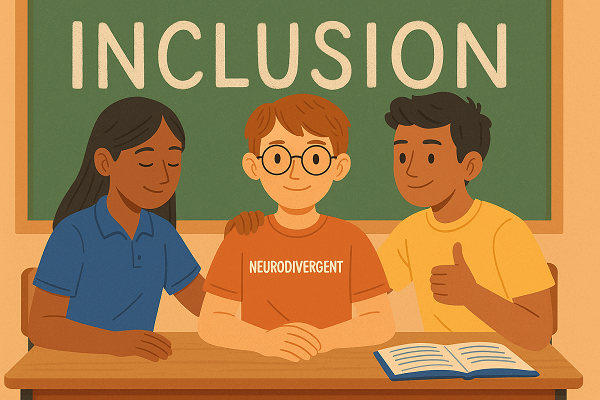
Aamir Khan’s recent film Sitaare Zameen Par has brought neurodiversity into the mainstream, and sparked important conversations about inclusion and rethinking what we consider ‘normal’. These cultural moments help raise awareness, but they also remind us that there is still a long way to go in making inclusion a lived reality.
It is estimated that 1 in 8 children in India have a neurodevelopmental condition such as ADHD, autism, learning disabilities and intellectual disability. Many of these children often face social isolation, bullying and exclusion – often the earliest of these experiences begin during school.
At the same time, today’s young people indeed carry with them a deep sense of social justice and openness to diversity. The energy, empathy and bold creativity of young people can be harnessed – if nurtured in the right way, at the right time – to make them equal partners in cultivating inclusive cultures in schools and communities.
We need young allies – people who are not only informed, but who engage meaningfully with neurodivergent peers, actively support the cause, and drive inclusivity. The key lies in equipping them with the knowledge, skills, and ultimately the mindset needed for inclusion. Schools must invest in nurturing young allies who can champion neurodiversity and take ownership of inclusion in spaces they belong to.
Our experience and work on youth allyship has shaped our understanding of what it takes to make this happen. Here are some of our most important insights:
- From awareness to active allyship: We need to move beyond awareness about neurodiversity, by equipping students with the knowledge, skills, confidence, and opportunities to take meaningful action as allies for neuro-inclusion.
- A personalised journey: Allyship is a lifelong journey which is most authentic when it grows organically from curiosity, dialogue, self-initiative and experiences. It cannot be imposed, and must be led by the individual.
- Student autonomy: When students have the autonomy to choose how they contribute, their commitment deepens. We should give students a mix of structure and freedom to help – guidance to shape their efforts, alongside the space to decide how they want to step up for meaningful change.
So how can schools nurture students as young allies?
- Create safe, relatable spaces led by students, for students Peer-led conversations give students space to reflect on diversity, challenge stereotypes, and share personal experiences. When peers lead, the power dynamics shift – students listen more openly, express without fear of judgment, and begin to see inclusion as something that belongs to them, not just a directive from authority figures. Our Inclusive Duniya Circles are one example of such spaces. Students are primed and empowered to sensitively facilitate conversations about disability, neurodiversity and inclusion.
- Explore connections to students’ interests and strengths
Students should be given the opportunity to discover how they feel about the cause and how they want to contribute. At the end of each Circle, we often ask, “How do you want to step up for an Inclusive Duniya?” The answers vary, but what matters most is that the initiative comes from the students themselves. Our role as adults and educators is to support them in making it happen.
Some take the route of advocacy – sparking conversations and campaigning for the cause with schoolmates. Others channel creativity through music, art, or theatre that challenges stereotypes.
For instance, the song Inclusive Duniya (available on Spotify), was written, composed and produced by students on their own from carefully crafting lyrics which invited listeners to imagine a world where everyone feels like they belong to picking melodies that convey warmth. Students used their creative talents to make a gentle but compelling call to action for allyship. Helping students tap into their personal strengths and interests enables authentic engagement and contribution to the cause.
- Embed into academic and co-curricular pathways
Linking students’ inclusion initiatives and projects to existing academic opportunities, such as CAS projects in the IB curriculum, allows them to merge personal passion with academic commitment. Framing these initiatives as co-curricular activities also strengthens students’ profiles for college applications. This dual recognition provides a formal recognition to their efforts and ensures students’ efforts are sustained – adding motivation, depth and commitment to their efforts.
The voices of young people not only impact their peers, but also have a ripple effect in shaping how families talk about disabilities, and, in due course, how communities and workplaces open themselves up to inclusion.
With the right support, our young generation can become a driving force for an inclusive world. Schools, as microcosms of society, provide the most conducive space for young people to explore sensitive concepts, question biases, and practice inclusion in meaningful ways. By nurturing young allies who truly value and celebrate diverse ways of thinking and being, we can lay the foundation for a more Inclusive Duniya.
This article is co-authored by:

Pooja Sharma, Founder and CEO, Inclusive Duniya

Srushti Patel, Manager- Schools Programme, Inclusive Duniya
Education
Ministry of Education Urges Schools to Adopt UPI for Digital Fee Payments, Promoting Ease of Schooling
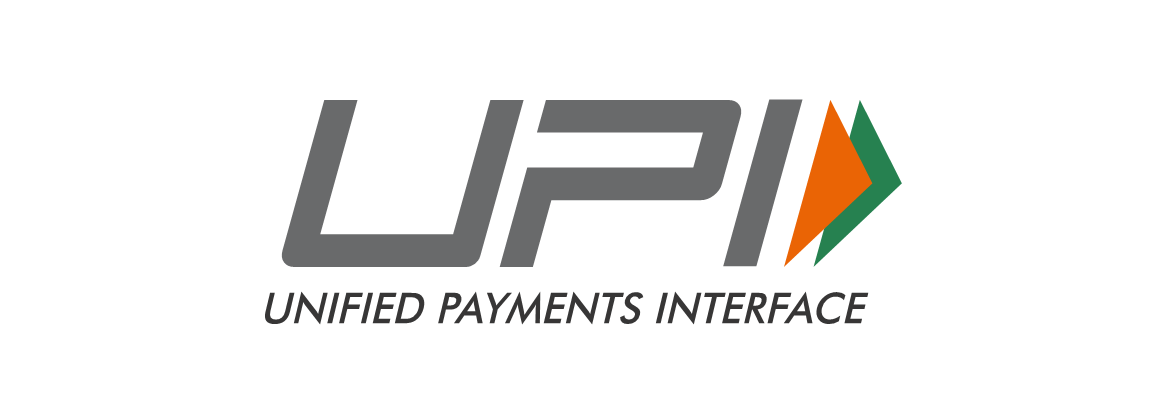
Education
Supreme Court Calls for Early Sex Education in Schools: “Not from Class IX, But from a Younger Age”

In a landmark observation, the Supreme Court of India has emphasised the urgent need to introduce sex education at a younger age, rather than waiting until Class IX as is the current norm. The apex court stated that children should be informed and sensitised about the physical and emotional changes that accompany puberty — and taught the necessary care and caution that come with it.
The observation came from a Bench comprising Justice Sanjay Kumar and Justice Alok Aradhe, which noted that the absence of early sex education leaves children vulnerable to misinformation and misunderstanding during their formative years.
“Sex education should be provided to children from a younger age and not Class IX onwards. It is for the authorities concerned to apply their mind and take corrective measures so that children are informed of the changes that happen after puberty,” the court stated.
The Bench made the remarks while hearing an appeal filed by a 15-year-old boy, who had been denied bail by the Allahabad High Court in a case under Sections 376 and 506 of the Indian Penal Code (IPC) and Section 6 of the Protection of Children from Sexual Offences (POCSO) Act. Recognising that the accused was himself a minor, the Supreme Court had earlier granted him bail in September 2025.
In the same case, the Court had directed the Government of Uttar Pradesh to submit an affidavit explaining how sex education is currently implemented in schools. The state responded that sex education is introduced only in Classes IX to XII, following NCERT guidelines. However, the Bench expressed concern over this delayed introduction and urged policymakers to revisit the framework to ensure children receive age-appropriate education much earlier.
The Court set aside the High Court’s order and made the juvenile’s bail permanent until the completion of the trial. More importantly, its remarks have reignited the national debate on the need for comprehensive sexuality education in India, which many experts argue is crucial to preventing abuse, reducing stigma, and promoting healthy development among adolescents.
Education experts have long maintained that early, factual, and inclusive discussions about puberty, consent, and emotional health must begin before adolescence — ideally in primary school — to prepare children for real-world experiences and relationships. The Supreme Court’s observation is expected to prompt renewed policy discussions on revising the sex education curriculum nationwide.
-
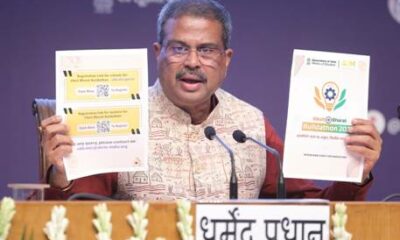
 Education3 months ago
Education3 months agoMinistry of Education launches Viksit Bharat Buildathon 2025 to Ignite Innovation among School Students
-

 Education3 months ago
Education3 months agoMaharashtra Education Department Plans Students’ Tour to NASA
-

 Education3 months ago
Education3 months agoGovernment Plans to Introduce Skill-Based Learning in Class 11 and 12 Curriculum
-
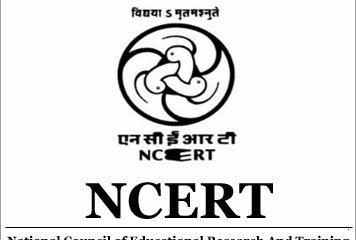
 Education3 months ago
Education3 months agoNCERT to Grant Equivalence to Class 10 and 12 Certificates Across Boards for Admissions and Jobs
-

 Education3 months ago
Education3 months agoClass 11 Student Navya Mrig on a Mission to Bust Myths About Organ Donation
-

 Education3 months ago
Education3 months agoSupreme Court Calls for Early Sex Education in Schools: “Not from Class IX, But from a Younger Age”
-
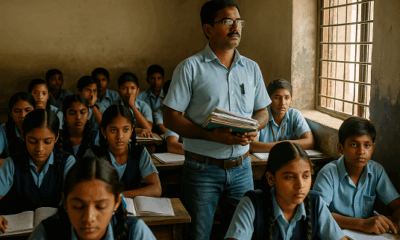
 Education3 months ago
Education3 months agoIndia Loves its Teachers, Just Not Enough to Pay Them: India Today Reports
-
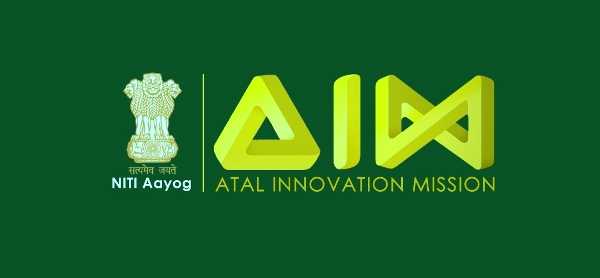
 Education3 months ago
Education3 months agoAtal Innovation Mission and IFCCI Join Hands to Scale Up Atal Tinkering Labs Across India
-
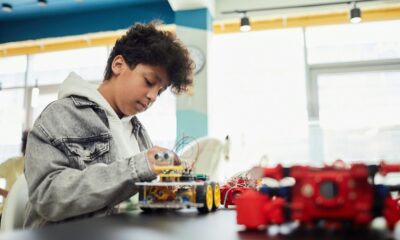
 Education3 months ago
Education3 months agoBeyond the Syllabus: School Teachers’ Insights on Project-Based Learning
-

 Education3 months ago
Education3 months agoDelhi Government Launches Online First Aid Training Programme for Teachers



